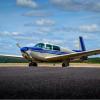-
Posts
240 -
Joined
-
Last visited
-
Days Won
2
Super Dave last won the day on October 12 2014
Super Dave had the most liked content!

Super Dave replied to MyNameIsNobody's topic in Vintage Mooneys (pre-J models)

Super Dave replied to Wildhorsesracing's topic in Vintage Mooneys (pre-J models)

Super Dave replied to Oscar Avalle's topic in Miscellaneous Aviation Talk

Super Dave replied to PaulB's topic in Miscellaneous Aviation Talk

Super Dave replied to PaulB's topic in Miscellaneous Aviation Talk
We have placed cookies on your device to help make this website better. You can adjust your cookie settings, otherwise we'll assume you're okay to continue.